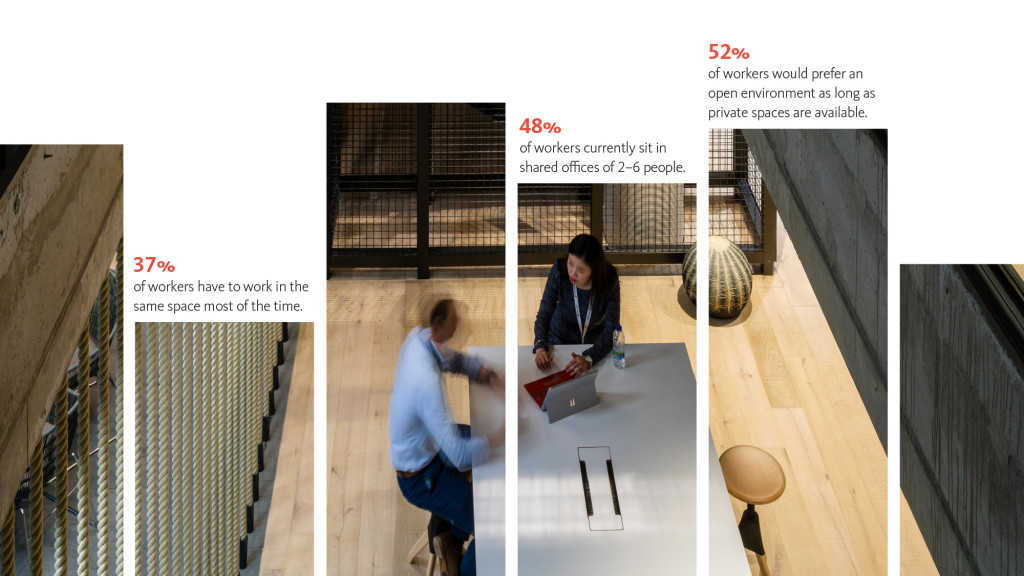How can German workplaces transform to encourage greater efficiency and satisfaction?
Research Project Name
Germany Workplace Survey 2019
What We Did
Germany is a global powerhouse that combines economic diversification with a skilled labour market. Well-known for its product quality and engineering, Germany’s polycentrism may go overlooked. In fact, the heart of Germany’s economy is small and mid-sized cities, nine of which fall within the 500,000 to 1 million population range. That type of diversity mirrors the empowerment that every employee brings to their workplace. Robust union and workers council participation, in addition to sound vocational training, provide the recipe for an informed and empowered economic foundation to the German workplace.
While the country is revered for novel approaches to many things that make the German economy tick, workplace innovation lags. Workplace design and dynamics have not progressed to reflect the average German worker’s expectations; therefore, satisfaction levels are relatively low. We have a holistic perspective on areas for improvement. More traditional design and organisational structures emphasize focused work — a priority for any business. However, collaborative work types are underutilized. To hit a stride of greater efficiency and satisfaction, investment in technology is key. Traditional hierarchical organisational structures may have yielded the meticulousness and rigour we have come to expect from German organisations. However, the German workplace must incorporate a more flexible paradigm to move forward. Change, directed towards these areas for improvement, makes for workplace evolution.
While the country is revered for novel approaches to many things that make the German economy tick, workplace innovation lags. Workplace design and dynamics have not progressed to reflect the average German worker’s expectations; therefore, satisfaction levels are relatively low. We have a holistic perspective on areas for improvement. More traditional design and organisational structures emphasize focused work — a priority for any business. However, collaborative work types are underutilized. To hit a stride of greater efficiency and satisfaction, investment in technology is key. Traditional hierarchical organisational structures may have yielded the meticulousness and rigour we have come to expect from German organisations. However, the German workplace must incorporate a more flexible paradigm to move forward. Change, directed towards these areas for improvement, makes for workplace evolution.
Learn More
Team
Philip Tidd, Janet Pogue, Christine Barber, Amrapali Agarwal, Michelle DeCurtis, Tim Pittman, Kyle Sellers, Laura Latham, Minjung Lee, Izabella Barlog, Leeann De Barros, Aina Ito, Chandkiran Nath, Peter Schaefer,
Year Completed
2019
Comments or ideas for further questions we should investigate?
